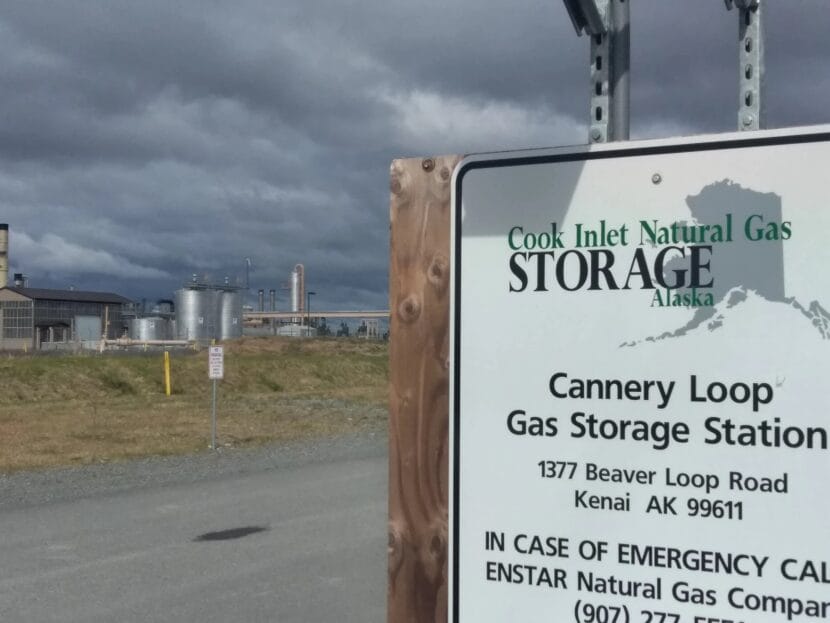A variety of proposals are moving through the state House and Senate aimed at alleviating a coming shortfall of Cook Inlet natural gas.
“We’re seeing a number of bills that are looking at how to address this,” Sen. Bill Wielechowski, D-Anchorage, said on Tuesday’s Talk of Alaska.
For years, utilities and gas producers have warned that supplies are dwindling in Cook Inlet, threatening to push up prices for electricity and heating. A Southcentral cold snap in January that strained gas infrastructure only underscored the urgency of the problem.
Now, lawmakers are trying to figure out the best way forward — and utilities say they have months, not years, to settle on a plan.
The bills they’re considering to ease the crunch fall into a few buckets — one, making it cheaper for producers to pull gas out of Cook Inlet. There are a few bills aimed at lowering taxes and royalties, though it’s unclear how much royalty or tax relief would actually juice production. At a hearing earlier this year, the largest-by-far Cook Inlet producer, Hilcorp, told lawmakers it wasn’t sure whether they’d move the needle on investment decisions.
Even so, Senate Resources Committee chair Sen. Cathy Giessel, an Anchorage Republican, said royalty relief could help smaller producers like HEX/Furie boost their output.
“They have the infrastructure in place, they believe the gas is there, so that seems like the quickest solution,” Giessel said. “That’s why the royalty relief has so much interest”
There’s also talk about making it cheaper to bring more drilling infrastructure to Alaska. A bill from Rep. Tom McKay, R-Anchorage and the House Resources Committee chair, would help companies offset the cost of bringing enormous offshore drilling rigs to Cook Inlet.
“The bill proposes a targeted incentive that will increase the project economics or improve the project economics for investing in another jack-up rig to be used in Cook Inlet to drill for and extract natural gas by providing a carry forward tax credit equal to the costs associated with leasing and transporting the rig to Alaska,” he said at a hearing introducing the bill.
One bill that seems to have broad support would give the Regulatory Commission of Alaska authority to regulate the price of gas storage. Giessel said that’d cut costs for consumers.
“We also want to make sure that other storage locations, all of them possessed by Hilcorp, fall under RCA regulation so that the price of that stored gas will be regulated on behalf of citizens and consumers,” Giessel said.
What we’re not seeing — yet — is a coherent package aimed at addressing the problem. But Sutton Republican and House Energy Committee chair Rep. George Rauscher said there’s a lot going on behind the scenes.
“This is actually going on in the building right now. Between the governor’s office, the administration, the Senate, the producers, everybody is involved in the discussion right now,” Rauscher said at Thursday’s House Energy Committee meeting. “We don’t have 4,000 people in one room, no, but we do have people that are working on those specifics at this moment.”
Of course, there are a lot more places to get gas than Cook Inlet — and utilities are starting to look more seriously at the possibility of importing liquefied natural gas.
The president of Southcentral gas utility Enstar, John Sims, told lawmakers small-scale imports could begin by the late 2020s. But a larger LNG import terminal would be a much larger investment, and Sims said would likely crowd out other local sources of gas.
“We have time to come up and take advantage of opportunities that the state has to utilize Alaska resources, and we’re championing those things, because we want to keep the resources maximized in the state of Alaska,” he told the Energy Committee. “The moment we import at a large scale, those opportunities are done.”
Sims said he hopes that in the very near future — “in a few months,” he said — conditions might change such that Cook Inlet producers are willing to commit to contracts providing a reliable supply of gas. That could delay the need for imports, he said. Sims said he’d prefer to leverage Alaska’s resources to the greatest extent possible — whether that’s getting more gas out of Cook Inlet or building a gas pipeline from the North Slope.
“But we are prepared to pull the trigger on an import solution if, ultimately, the state’s resources don’t come to fruition in the time that we need it,” Sims said.






